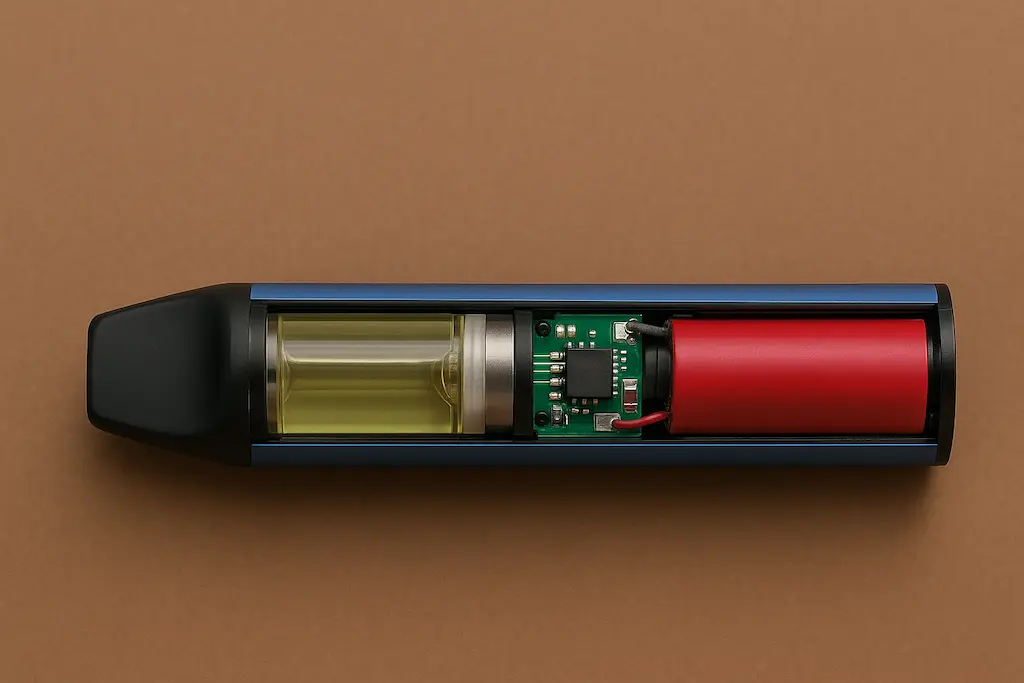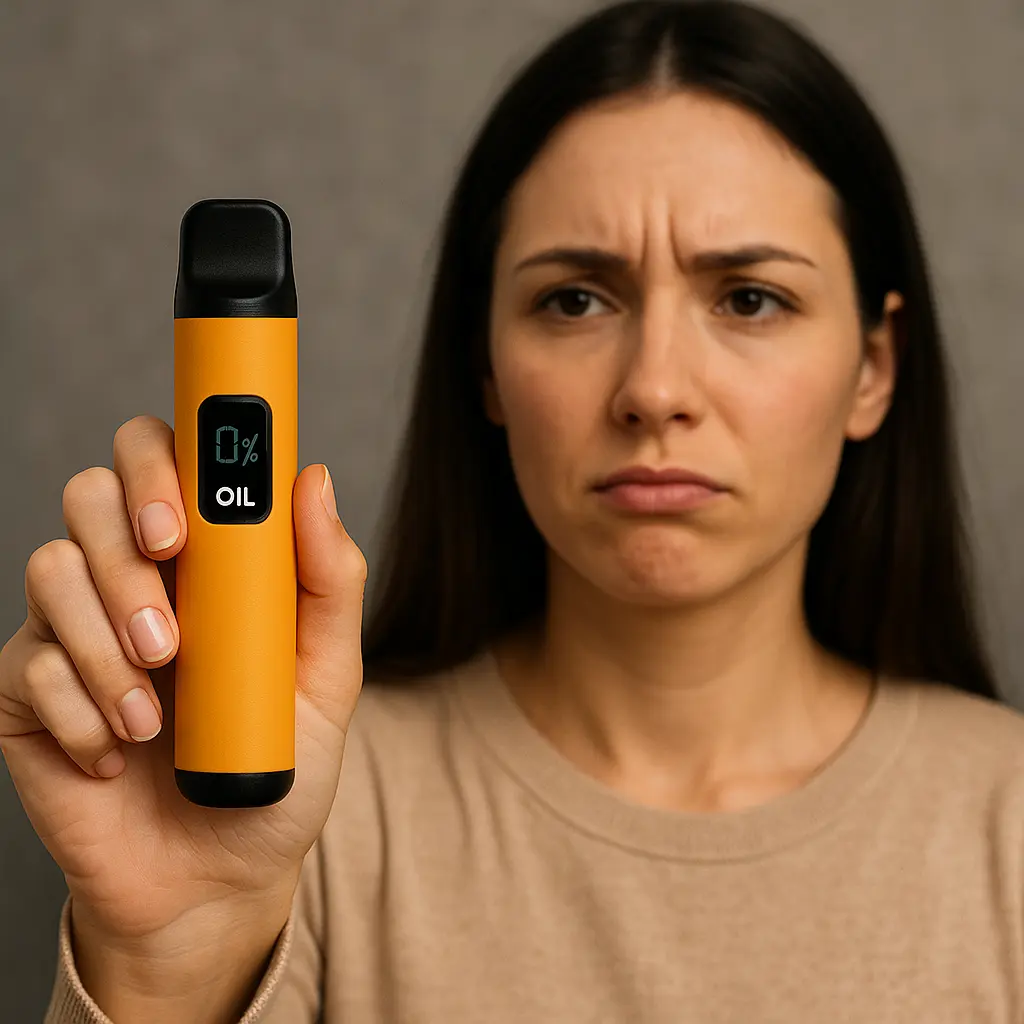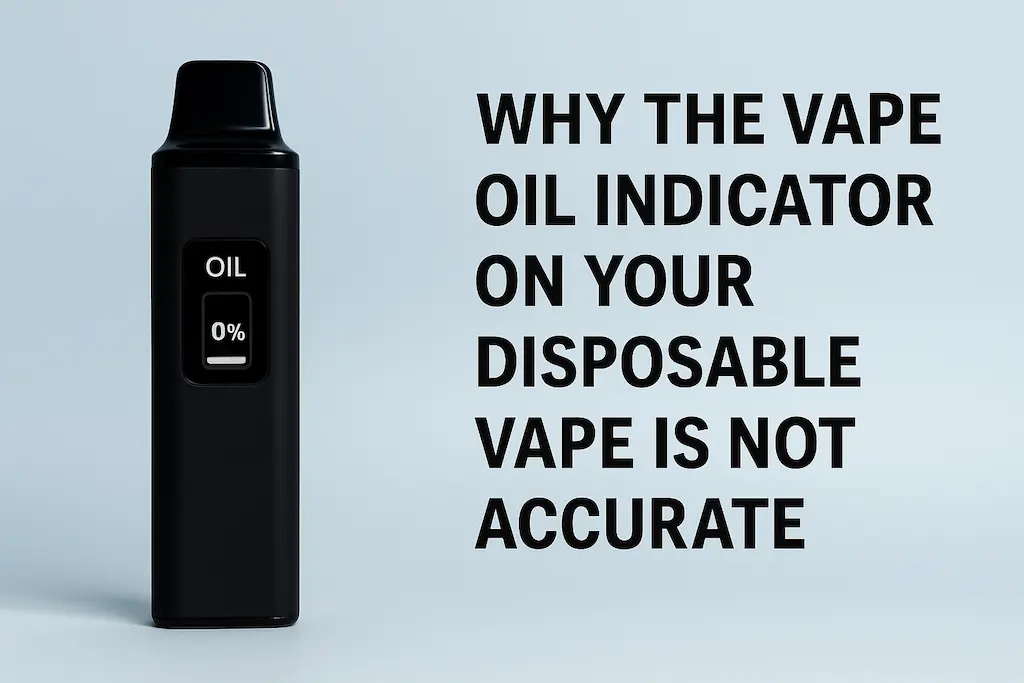Why Your Vape Screen Shows “Empty” — But You Can Still Vape
Many users have the same question:
Why does my vape screen show “oil empty,” but it still hits normally?
Some start thinking brands are lying with fake puff counters.
Others doubt their own memory — “Did I really finish this vape?”
Actually, this happens to almost every disposable vape with a screen.
Most vape oil indicators are not accurate because these devices don’t include a real vape oil level sensor.
The percentage or bar you see is just a software timer, not a genuine liquid measurement.
According to Vapegreen’s disposable vape guide, puff counts and oil bars are machine-based estimates that rarely reflect real-world inhalation patterns.

The Hidden Truth: It’s Just a Puff Timer, Not a Real Sensor
Inside most disposable vapes, no hardware reads the liquid level.
Instead, the chip runs a puff timer — it counts the number of hits or estimates the time used.
That’s how the vape guesses how much oil is “left.”
A Totally Wicked article explains that “big-puff” numbers printed on packaging are only software-based predictions.
For example:
A factory might program the chip assuming a full device equals 10,000 puffs or 100 hours of use.
If you take big, deep puffs, you’ll finish the real e-liquid sooner, even though the vape screen still shows 50% left.
Or the opposite — if you vape gently, the display might show empty, yet there’s still half the oil inside.
That’s because the puff timer and the real oil consumption never match perfectly.
Each brand sets its own vape sensor formula, often just an estimated countdown — not a physical reading.
Independent testing by Vape-Testing found that claimed puff numbers can exceed real usage by more than 20 percent across common disposable brands.
Why Manufacturers Don’t Use Real Vape Sensor Technology
It’s not always about cheating — it’s about cost and product design.
True vape oil sensors require liquid detection modules that are expensive and hard to miniaturize.
For single-use products, that doesn’t make business sense.
To keep disposable vapes cheap, light, and convenient, most brands rely on simplified vape sensor chips and fake oil indicator formulas.
If factories started adding real liquid-level detection technology, production costs would rise sharply, doubling retail prices.
Think about it: would you pay double the price for a disposable vape just because the oil indicator is more accurate?
Probably not — that extra money could already get you a full starter kit for a refillable vape device.
Disposable vapes focus on convenience, portability, and low price, not laboratory precision.
They’re meant to be used easily and recycled properly under local environmental rules.
As Vapor Authority notes, puff-count estimates are mostly marketing tools that simplify consumer choice rather than reflect real hardware data.

How to Tell a Fake Puff Counter or False Vape Indicator
It’s easy to recognize when your vape screen is just running a puff timer instead of a true sensor:
- The vape says “empty” but still makes vapor.
- The flavor becomes weak long before the indicator reaches 0%.
- Two identical vapes show different readings even when used equally.
- The “remaining oil bar” drops suddenly after heavy use.
These are clear signs that the vape oil indicator is based on usage time, not a real vape oil level measurement.
Scientific studies also support this: a National Institutes of Health (NIH) report shows that frequency-based monitoring is far more common in e-cigarette research than real-time liquid volume measurement, confirming that most devices lack physical oil sensors.
What Actually Matters When Buying a Disposable Vape
Forget about flashy displays or fake puff counters — focus on what’s real and important:
- E-liquid quality:
Choose brands that use safe ingredients and certified nicotine formulations. - Battery stability:
A reliable lithium battery ensures consistent power without overheating or leaking. - Brand safety reputation:
Reputable brands test their coils, airflow sensors, and internal chip modules for safety.
As Mass General Brigham highlights, measuring nicotine exposure by puff behavior — not by device display — gives a truer picture of real consumption.
Don’t let “puff numbers” or “oil percentage” fool you — they are marketing features, not performance metrics.
As long as the vape oil and battery system are safe and stable, the device will serve its purpose well.
And remember: always dispose of used vapes properly according to your local recycling or e-waste laws.
How Many Puffs Do You Really Get?
There’s no exact number, only an estimate.
Real usage depends on:
- Your puff strength – deep inhales burn oil faster.
- Coil resistance & mesh size – lower resistance consumes more liquid.
- Battery voltage – stronger power means faster heating and more vapor.
Even with a puff timer showing “10,000,” most users will get somewhere between 70–90 percent of that, depending on their habits.
So when your vape shows “empty,” take it as a general reference, not scientific data.
FAQs About Vape Oil Indicators
Q1: Are vape oil screens fake?
Yes, most disposable vape oil indicators are estimated puff timers. They don’t have true liquid-level sensors.
Q2: Why does my vape show empty, but still works?
Because the indicator is tracking time or puff count, not the real e-liquid volume. The coil still has juice left.
Q3: Can brands make accurate oil indicators?
Yes, but it would require advanced vape sensor technology, increasing costs and making disposables too expensive.
Q4: How can I know when the oil is really finished?
When vapor becomes thin, flavor drops, or a burnt taste appears — that’s the real sign your e-liquid is gone.
Q5: Should I worry if my vape shows the wrong oil level?
No, it’s harmless. Just buy reliable brands with safe oil and good batteries. The display error doesn’t affect your health.
